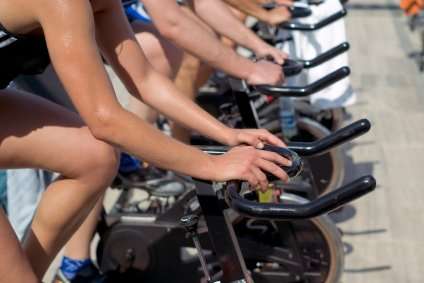Credit: University of California, San Francisco
Women bicycle riders are more likely to experience urinary tract infections, genital numbness and saddle sores, but not more likely to have serious sexual and urinary symptoms than non-cyclists. In fact, high-intensity female cyclists had better sexual function, according to a new study led by UC San Francisco.
The research, which analyzed data from women athletes in five countries, including the United States, investigated whether cycling negatively impacts urinary and sexual function in women.
Previous small studies have demonstrated a possible relationship between cycling and sexual dysfunction, which has led to wide scale assumptions that biking could impair urinary or sexual function. However, the new study showed no worse sexual or urinary function in women cyclists than non-cyclists, although the authors noted that the problematic genital symptoms could possibly lead to issues related to sexual dysfunction down the road.
The study will be published March 13, 2018, in the Journal of Sexual Medicine.
"We found that lifetime miles ridden was associated with better sexual function, as measured by a common, validated questionnaire," said first author Thomas W. Gaither, a UCSF medical student.
"One of the more novel findings of the study is that lifetime miles ridden were directly correlated with saddle sores and urinary tract infections," Gaither said. "These findings may be considered by some as minor, however, saddle sores and infections may inhibit sexual activity. If we could find a way to prevent saddle sores and infections, we believe that cycling might improve the sexual health of women."
Women bicycle riders now make up about half of all cyclists in the U.S., an 8 percent increase from 2011, recent surveys have reported. The health benefits are numerous, including improved heart function and lower rates of obesity. Still, there have been reports linking cycling to urinary or sexual dysfunction.
For the new study, participants were recruited from major cycling, swimming and running organizations in the U.S., Canada, the United Kingdom, Australia and New Zealand. Swimmers and runners were recruited as a comparison group.
Survey participants were divided into two groups: low-intensity and high-intensity riders. High-intensity riders were defined as women who had cycled for more than two years and rode their bikes more than three times weekly, averaging more than 25 miles each time.
Altogether, 3,118 women completed the survey. Of those, 34 percent were non-cyclists, 53 percent were low-intensity cyclists, and 13 percent were high-intensity cyclists. The majority of participants were white, under age 40, single and normal weight. In addition to the Female Sexual Function Index, they also completed the American Urological Symptom Index questionnaire.
The cyclists were queried on numerous factors: bike type (mountain, road, hybrid, recumbent); saddle type (wide, unpadded, long); frequency of wearing padded shorts; amount of time standing while cycling; saddle angle; handlebar height; and type of riding surface (urban, rural, off road).
The researchers adjusted for a number of factors, including age, race, body mass index, hypertension, diabetes and tobacco use.
The researchers confirmed an association between cycling and genital numbness and saddle sores, but no association between cycling intensity or duration and sexual or urinary function. This study also showed some indication of improved sexual function among high-intensity bike riders, as measured by significantly greater scores on the Female Sexual Function Index and a lower odds of reporting sexual dysfunction than non-cyclists. They said further study is warranted, particularly concerning a possible link between cycling and urinary tract infections.
More information: Cycling and Female Sexual and Urinary Function: Results From a Large, Multinational, Cross-Sectional Study. Journal of Sexual Medicine. doi.org/10.1016/j.jsxm.2018.02.004
Journal information: Journal of Sexual Medicine
Provided by University of California, San Francisco






















